Rubber and latex are not the same thing, but many people use the words as if they are the same. Latex is the milky white sap of rubber trees, which is found beneath the bark of a mature rubber tree.
So how is rubber made and does rubber contain latex? Yes, it certainly does and we will look at the production processes of how is rubber made.
Latex is a natural substance which is harvested from plants, but it can also be artificially produced through chemical processes. Latex is often used as a synonym for rubber, but the term actually refers to a suspension of tiny polymer particles that is held in any liquid medium.
Where does Latex come from?
Although the most famous source of natural latex is the rubber tree,
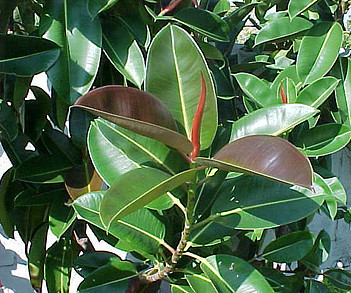
it is actually found in about ten percent of all plants. Latex is a different substance as sap, and the plant creates latex as a protection against insects. If a plant is injured, it produces latex to seal themselves and thereby protecting them from attacks by insects.
Natural latex is a complex mixture of proteins, starches, sugars, resins, oils, tannin, alkaloids and gums. When it is exposed to air, it coagulates.
The Para rubber tree, Hevea brasiliensis, originally came from Brazil, but from there is was introduced to the Far East to countries like Indonesia, Malaysia, Cambodia, Vietnam, China and Burma. Most natural rubber comes from the Far East, with Thailand and Indonesia as the two leading rubber producers.
Lifespan of rubber trees in plantations is about thirty-two years. The first seven year are just growing, and then there are twenty-five productive years. Well drained soil is required and the optimum climatic conditions are:
- Rainfall of about 2500 mm per year, and with at least 100 rainy days.
- Temperature range of between 20 degrees to 34 degrees Celsius, with a monthly average temperature of 25 degrees to 28 degrees Celsius.
- Humidity level of around 80%.
- Around two thousand hours of sunshine per year, at a rate of six hours per day.
- The absence of strong winds.
So What is Rubber?
Yes, rubber is that black stuff that makes up the tires on your car or motorbike or other vehicles. 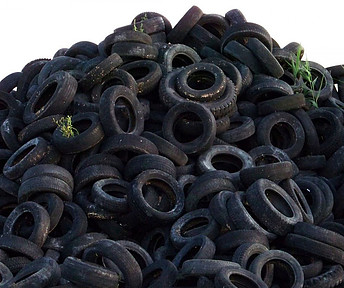 The description on Wikipedia is “Natural Rubber, also called by other names of India rubber, latex, Amazonian rubber, caucho or caoutchouc, as initially produced, consists of polymers of the organic compound isoprene, with minor impurities of other organic compounds, plus water.”
The description on Wikipedia is “Natural Rubber, also called by other names of India rubber, latex, Amazonian rubber, caucho or caoutchouc, as initially produced, consists of polymers of the organic compound isoprene, with minor impurities of other organic compounds, plus water.”
Rubber has been commonly used for more than a thousand years. Originally it was all made from natural sources, but now it is also synthetically or artificially produced.
Synthetic rubber was predominantly developed in Germany and the USA, due to the increased demand for rubber during the Second World War. Russia, France, Germany and the USA are still the biggest producers of synthetic rubber.
The Different Types of Rubber
There are two different types of rubber:
- Natural Rubber is made from latex that is grown from plants.
 Latex is a milky, runny liquid that oozes from certain plants when you cut them. Although there are about two hundred plants that produce latex, more than 99% of the world’s natural rubber, is produced from latex that comes from a tree species called Hevea brasiliensis, or commonly known as the rubber tree or Para rubber tree. Natural rubber is also called India rubber, latex, Amazon rubber and discover the best flip flop sandals made from natural rubber here. Latex also comes from dandelions.
Latex is a milky, runny liquid that oozes from certain plants when you cut them. Although there are about two hundred plants that produce latex, more than 99% of the world’s natural rubber, is produced from latex that comes from a tree species called Hevea brasiliensis, or commonly known as the rubber tree or Para rubber tree. Natural rubber is also called India rubber, latex, Amazon rubber and discover the best flip flop sandals made from natural rubber here. Latex also comes from dandelions. - Synthetic Rubber is made from petrochemicals in chemical plants, and one of the first, and best known artificial rubbers, is neoprene. The most important synthetic rubbers in the commercial world, are Styrene Butadiene (SBR), poly acrylics, polyvinyl acetate (PVA), polyvinyl chloride (PVC), polychloroprene (also known as neoprene) and various types of polyurethane. Synthetic latex is also a liquid emulsification of polymers, but to make synthetic rubber, petroleum based products are used. Synthetic rubber is stronger and more stable than natural rubber when it comes to products like vehicle tires, so synthetic rubber is widely used in manufacturing vehicle tires. Creating synthetic rubber involves a different process and will not be covered in this post.
I will concentrate on natural rubber in this article.
Harvesting Latex
Natural rubber manufacturing starts with harvesting the latex from rubber trees. 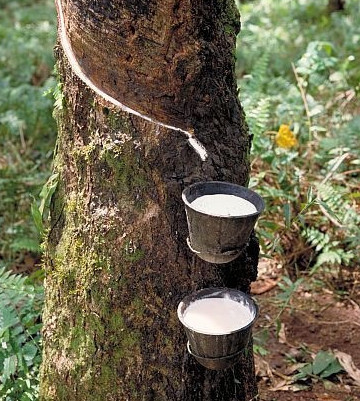 The process is called “tapping” and this means scoring or cutting into the bark of the tree. To harvest latex from rubber trees, the bark is split, which allows the milky latex to seep out and be collected.
The process is called “tapping” and this means scoring or cutting into the bark of the tree. To harvest latex from rubber trees, the bark is split, which allows the milky latex to seep out and be collected.
Latex then flows into a cup that is attached to the end of the cut in the tree. The process is similar to harvesting the sap from the maple tree for maple syrup.
Trees are normally “tapped” every two to three days. Latex is led into the cup or receptacle by a galvanized “spout” which is knocked into the bark.
Rubber tapping demands accuracy so that the incisions would not be too deep or too many. The rubber tree must not be killed and the growth must not be stunted. The critical factor in tree tapping is bark consumption.
The tubes in the bark that contains latex, ascends in a spiral to the right. Tapping cuts therefore usually ascends to the left, to cut through more tubes. Trees drip latex for about four hours and stops as the latex naturally coagulates on the cut. This then blocks the latex tubes in the bark.
Latex material from many trees is accumulated in large tanks.
Chemicals are added to the latex after collection to prevent it from stiffening up. To produce final natural rubber, latex goes through several processes like these: coagulation, centrifugation, compounding, vulcanization, stripping, leaching, chlorination and lubrication. More about how is rubber made will follow later.
4 Types of Field Coagula
Latex coagulates or solidifies quickly, so must be collected from the cups before it coagulates. The collected “field” latex is transferred into an air-tight container to preserve it in a liquid state for longer, or it is transferred into coagulation tanks for preparation of dry rubber. Ammonia is sometimes added to the latex to prevent it from solidifying. 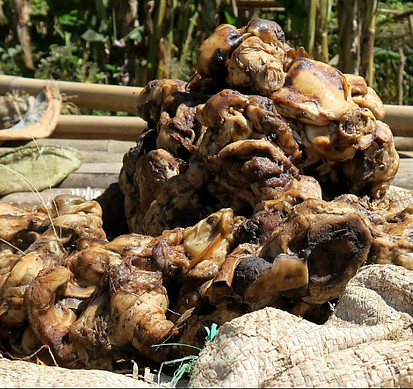
- Cup Lump: some trees continue to drip after the collection, leading to a small amount of coagulated material that is found in the collection cup when the tapper visits the tree again. This is high purity and more valuable than the other three types.
- Tree Lace: latex coagulates on the tapping cut and forms a strip that the tapper peels off the previous cut before making a new cut. This has a higher manganese and copper content than cup lump. Copper and manganese are both pro-oxidants and can damage the physical properties of dry rubber.
- Smallholder’s Lump is produced by smallholders that collect rubber from trees that are far away from factories. Smallholders who farm on paddies in remote areas, will tap the trees on the way to work in the paddy fields and collect it on their way home. By the time they return after work, the latex has coagulated and it is often impossible to preserve the latex sufficiently to be used in high quality products.
- Earth Scrap is the material that gathers around the base of the tree. It comes from latex that overflows from the cut and runs down the bark, or rain can flood the collection cup, or it can be from tappers that spill latex during collection. This latex contains soil and other contaminants and has a variable rubber content. Earth scrap is collected two or three times per year and may be cleaned to recover the rubber., but it is low quality.
Latex vs Rubber – How is Rubber Made?
Temperature will change the natural latex. Unprocessed latex is brittle when it is cold and when it warms up, it becomes sticky and smelly. The molecules in raw latex are long chains that are tangled up and the links are weak. This means it is relatively easy to pull apart, which is why rubber is elastic and stretchy.
To turn it into a more versatile material, more processes are required and these are the basic steps: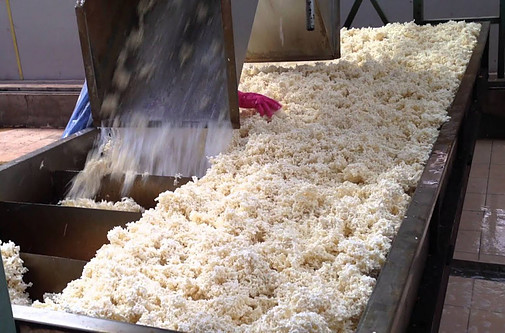
- When latex is heated, solid chunks of crude rubber will rise to the surface of the liquid. This crude rubber is then skimmed of the surface and run through large heavy rollers. This will also remove any excess liquid. The long, thin, pressed rubber sheets are then taken to other factories to be turned into rubber products.
- Compounding adds chemicals and other additives to customize the rubber for the intended use. The formulation and method depends on the intended outcome of the fabrication process.
- Mastication: masticating machines have mechanical rollers and presses that “chew up” the raw rubber. It makes it softer, easier to work with and more sticky. After mastication, extra chemical ingredients are mixed in to improve the properties.
- Calendering is a process where the rubber is squashed into shape by rollers, or through
- Extrusion the rubber is squeezed through specially shaped holes to make hollow tubes.
- Finally the natural rubber is vulcanized or cooked in an autoclave (an autoclave is an industrial pressure cooker). During this process, sulphur is added and the rubber is heated to about 140 degrees Celsius. Vulcanization makes rubber stronger, in that the sulfur atoms that are added, form cross-links that “bolt” the molecules together. This makes it more difficult to pull them apart, and improves the elasticity and resistance. Peroxide or bisphenol can also be added to prevent it from perishing. Vulcanization also makes rubber more stable in different temperatures.
- Fillers are also used to improve the durability and strength of rubber. Carbon black, derived from soot, is the most commonly used filler, resulting in a strong, durable, black rubber. Carbon black will increase the tensile strength of rubber and resistance to tearing and abrasion. It also increases rubber’s resistance to degradation by ultraviolet light, so is added to improve the strength of vehicle tires.
So does rubber contain latex? It certainly does, as natural rubber is made from latex.
Properties of Rubber
Rubber is strong, flexible, waterproof and a poor conductor of heat and electricity.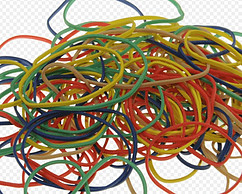
Some people have a serious latex allergy, but it could be the residues from chemicals that can also lead to allergic reactions, rather than the latex itself.
Soft and stretchy latex is used in products like pencil erasers, protective gloves, condoms, balloons, adhesives and paints.
Hard rubbers are used for stronger and tougher applications like inflatable boats, waterproof liners for garden ponds, heat pipes and fiber-optic cables.
Uses of Rubber
Rubber is a very versatile product, and although about fifty percent of rubber is used in vehicle tires, it also has many other diverse uses. 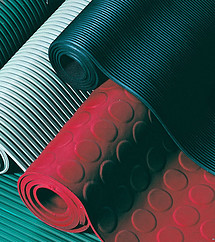
- Door seals on washing machines.
- Widely used in the building industry as roof and floor sealants
- Sound and vibration absorbers in window and door linings
- Elastic and rubber produced as a fiber, has excellent elongation and recovery properties, making it very important in the textile industry. Spandex, used in stretchy fabrics, is an elastomer fiber.
- Uncured rubber is used for adhesives, insulation and friction tapes.
- Vulcanized rubber has more uses, conveyor belts being on eof them.
- Flexibility means it can be used for hoses, rollers in printing presses and clothes wringers.
- Elasticity makes it suitable for shock absorbers and to reduce vibration in machine mountings.
- Rubber is impermeable to gas, which makes it useful for articles like balls, balloons, in hoses and cushions.
- Footwear like flip flop sandals and thongs.

- Water resistant which makes it suitable to be used for diving gear, rain wear, medical and chemical tubing, linings in storage tanks, railroad tank cars and processing equipment.
- Waterproof clothes like raincoats and wellington boots and shoes, adhesives, sticky plasters.
- Outer covering of wet suits and Patagonia is producing neoprene free wet suits, made with Yulex natural rubber. .
- Electrical resistance:
- soft rubber is used as insulation and for protective products like gloves, shoes and blankets.
- hard rubber for electrical instruments, parts of radio sets and meters and telephone housings
- The friction coefficient of rubber is low on wet surfaces and high on dry surfaces, leading to it being used for power-transmission belting and water-lubricated bearings in deep-well pumps.
- High value items like surgical gloves, condoms and balloons are manufactured from the top end of latex production.
A wide range of bacteria can lead to degradation of natural rubber.
Rubber derived from dandelions
Dandelions grow in moderate climates and soil that might not be suitable for cultivation of food. 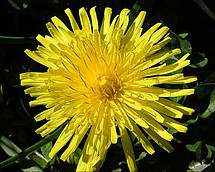 The plant is extremely resilient and is an annual crop. Russian dandelion yields a large amount of natural rubber and could be a good alternative to the rubber tree.
The plant is extremely resilient and is an annual crop. Russian dandelion yields a large amount of natural rubber and could be a good alternative to the rubber tree.
The only drawback is that a huge amount of land would be required to cultivate enough dandelions to replace rubber trees.
The dandelion roots are pulverized to extract the rubber as the leaves contain very little rubber. It is an eco-friendly and sustainable crop.
Is Rubber Eco-friendly?
Natural rubber or rubber derived from trees, is eco-friendly. Harvesting the latex and using the product, has a low environmental impact and after incision, the tree heals naturally. The rubber tree is an ecologically, sustainable crop and helps to maintain the global carbon balance in the atmosphere.
There is a huge amount of rubber waste that mainly comes from discarded vehicle tires. Natural rubber can be recycled.
- Recycled rubber: Ground up used and discarded vehicle tires are used to make recycled rubber. A variety of mesh sizes are produced from the tire crumb. The product with the highest demand is for Tyre Derived Fuels or TDF’s. The build-up of rubber in landfill is eliminated by the production of this type of rubber. It has a lost cost to manufacture and has low energy requirements. It is the most economical of all rubber options. Recycled rubber is used for matting or flooring in children’s playgrounds, car components, shoe soles, mouse pads, sports bags and many more. Recycled rubber sheets also have commercial applications. These are all forms of eco-friendly rubber.
- Reclaimed rubber: this is discarded elastomer which has been de-vulcanized. This means that it can be used in a similar way to virgin materials.
New innovations with recycled rubber, are wallets made from upcycled wet suits.
Half of the world’s rubber is used to make vehicle tires, with at least half of the tires ending up in landfill, dumped or incinerated.
Synthetic rubber, which is petroleum-based elastomers, is not environmentally friendly or sustainable.
So does rubber contain latex It certainly does, but they are not the same thing.
If you have any comments on latex vs rubber, or how is rubber made, please leave them below and I will get back to you.

Sorry, I am soooo confused now.
Recently had our floors refinished and we want to lay an area rug. We were told to get a Rubber Pad . But, went to Lowes and picked up a pad which states “latex rubber” backing on a felt layer. The latex would be on the floor. So, since the word “latex” is before the rubber, is this truely a rubber pad which would be good for the floor. Or is this really not a 100% rubber pad?
Hi there, thank you for reaching out. I do not know what type of floors you have (wooden, bamboo, cork, ceramic tiles, etc?) and therefore what is the best cover for it. Please go back to Lowes and ask them for the specifics of the product that you bought from them. I hope it helps.
The fact that artificial latex is way sturdier and less fragile than its natural counterpart really caught me off guard there (in a good way). This makes me think of my cousin who, throughout last week, has been helping his neighbor searching for some decent latex supplies for his gasket production. I’ll share this information with him so he’ll know what to find later on.
Artificial rubber is cheaper to produce, but not sustainable as fossil fuels are used. Natural rubber is far better for the environment. I hope this helps.
Hi,
Very enlightening article. Thank you for all the insights on natural rubber and latex. I have a query on natural rubber’s biodegradability. Is it fully biodegradable? And if it is then how long does it generally take to decompose? Also tires made of natural rubber after they land up in a landfill, then why don’t they decompose?
Thank you.
Natural rubber takes between 50 and 80 years to decompose. Most tires are actually made from synthetic rubber, which takes hundreds of years to decompose. Landfill is without oxygen, which doesn’t provide the right environment for biodegradable products to decompose, hence the time it takes for natural rubber to decompose. I hope it helps.
I have always thought latex was made from rubber and not the other way around. When asked if I have any allergies I have always confirmed rubber, to which they always respond latex and I say no rubber. On reading your article I now think I am allergic to both as my body reacts to practically everything listed eg tyres, shoes, latex gloves, balloons, paint, silicone, expanding foam, floor mats, elastic in clothing, the list is endless. I also react to the smell of rubber.
Thank you for sharing your experience. It must be difficult to live with such a severe allergy. All the best.
I’m so confused – I’ve been told that I’m allergic to carba mix chemicals but not to latex so I have an allergy to rubber. Would natural rubber latex be ok for me therefore??
Natural rubber is a natural product, not a chemical. So if you are not allergic to latex, then natural rubber latex should be okay. But without knowing your allergy, I cannot advise more. I hope it helps and all the best.
Hi Liné, we are a manufacturer of latex gloves in China. Customers have always consulted us about the difference between rubber and latex.
Can I share this article on our website and indicate that the source is from your blog?
Thanks in advance!
Hi Matt, you are welcome to share my blog and a link to ecoworldonline.com on your website. All the best, Liné
We are Producers & Exporters of Natural Rubber.
Our minimum supply is 5000MT weekly. Good % DRC
. Our Products are;
****** Natural Rubber Cup Lump
****** RSS
****** TSR
****** Crepe Rubber
****** Latex etc.
Thank you for making contact.
Hi Line,
Thank you for such a useful post.
I’m researching the best rug pads to use on hardwood floors. It sounds like Natural Rubber is the optimal choice as it could have less chemicals than recycled rubber from tires. It is puzzling when vendors refer to latex without specifying that it is ‘natural’ and not synthetic. I welcome your feedback and advice.
Judy
Hi Judy, If the manufacturer is using natural rubber, then they are normally proud of it and will put it on the product labeling or description.If it does not specify, then it is often synthetic. But it would be best to contact the specific manufacturer to ask what they use, or you could go on their website and see if they give a description of the manufacturing process and materials that are used.
I hope this helps you but please let me know if you need more help. Liné
I have a question, so the description on a pair of rain boots says “latex” with rubber soles. Another description for a pair say “rubber” boots….I have read your article and found it very informative…but not sure why the two different descriptions of material. Please help with this. Thank you.
Hi Jane, not having access to the products or posts that you are referring to, makes it difficult for me to see what you are referring to. If you can please give me more details, I would be happy to help.Liné
So if I am allergic to latex am I allergic to rubber? Which one would I be allergic to? The natural or synthetic? So am I allergic to rubber gloves and rubber hoses and shoe soles and eraser shavings and rubber bands and balloons and neoprene?
Hi JoAnne, A latex allergy is normally caused by the proteins found in natural latex, which is present in natural rubber. Synthetic rubber is not made from latex, but there could also be an allergic reaction to the chemicals that are used in making synthetic rubber. So without knowing you, I do not know if you are allergic to the products that you mention, as many of them are made from synthetic rubber as well.
But if you are allergic to natural latex, natural rubber could possibly also cause an allergic reaction if your skin is in direct contact with it. So you should be okay with rubber soles in shoes as there is normally an inner sole and your foot is not in direct contact with the actual outer sole.
I hope this helps you, Liné
Just sharing:
Most Dry NR products would not pose allergenic issues. Dry NR is derived from latex (sap, wet form) that has gone through a process of coagulation and drying/ baking under intense heat that almost eliminates/ negates the allergenic issue. Manufacturers of Dry NR products receive the ‘material’ in huge chunky/ blocks – dark gold/ caramel colour.
Allergenicity:
Natural Rubber Latex contains extremely small particles of rubber which acts as allergen to the immune system for certain people.
Where as coagulation and drying process makes the extremely small particles of rubber in Natural Rubber Latex become extremely big particles of rubber. The big particles of rubber is no longer recognize by the immune system. Thus, Dry Natural Rubber is no longer an allergen. Some in the medical industry provide labeling:
• “This Product Contains Dry Natural Rubber.”;
So if anyone is allergic to latex, please check if the product is made from Dry NR.
Thank you for this very helpful information.
Hello there, Thanks for sharing this awesome article….Many people don’t realize that there is a difference between “latex”, “natural rubber latex” and “natural rubber”.It is interesting to note that the word “rubber” was believed to be given to this material back in the 17th as it was mostly used to erase or run out pencil writings….for me I think they are two different things entirely, although Rubber is the gotten from latex.
It is interesting to note the differences and also similarities between latex and rubber, but great that we do have natural rubber that can be used in products like footwear and other sustainable applications.
Your article is very informative. Although, I know that Latex and Rubber are totally different, I didn’t know how it differ from one another until now. And I thought that Latex is more eco friendly than Rubber!! I know, it’s sounds dumb, but if you’re not actually interested in something, you don’t obliged yourself to know it.
So, this is an eye opener for me and I am very sure that many people doesn’t know about this fact either. What’s interesting is Rubber tree is sustainable, the power of nature indeed.
The picture you used in this article, the first one, is it an example of a Rubber tree (plant)? I wanted to know because I have the same one in my living room now.
Hi there, the first photograph is of a rubber plant and it is a popular house plant when it is small. The rubber tree is indeed a sustainable plant and we need to look after what mother nature has given us. Liné
I understand the difference between latex and rubber but I’m still unsure how to guarantee I am using an entirely sustainable product. How do I know whether a product is made from sustainably sourced rubber or not? I love the idea of fields of dandelions! The rest of the plant is also a healthy food source I believe so could have multiple uses.
The product information or label will normally tell you if the rubber came from a sustainable source so look out for the Fair Rubber certification. Dandelions can certainly be eaten and although it might be on the bitter side, it is healthy and nutritious. I hope this helps you.
Hi Lin,
What a useful article, I really enjoyed reading it!
I always thought that rubber and latex are the same, but after reading your article, I conclude they are not. I am doing a lot of researches on rubber outsoles, and this article answers all the questions I had about it.
I often see a sort of white glue that comes out from my tree, and when I touch it, it’s sticky. Is this natural latex? If so, it’s unbelievable what nature can do.
I am interested in the flip flops from natural rubber. I’ll check this further.
Thank you very much!
Hi Daniella, The white sap that you see in plants and trees when you cut it, is natural latex and nature is indeed amazing. I am sure you will enjoy your natural rubber flip flops. Liné
I always assume that latex is the rubber, now I know better. My uncle has a rubber plant in Thailand so I get to the production of how it is made first hand. I am not so fond of the smell but the sap is actually very similar to milk and it is thicken like glue, just like the picture you provide. I had no idea that you can produce rubber synthetically that explains the price differences. Well my question is if the synthetic one is bad for the environment, how can we tell if the product is made from the latex or synthetic? Does it say on the label?
The label or product description should provide you with the information that it is natural or synthetic. I hope this helps you.
This is so informative, thanks alot. Working on a school project , Rubber processing factory and this article have given great information about the rubber and latex. Thanks.
I am very pleased to hear that you found the post helpful. All the best, Liné
I never realized the similarities and differences between natural rubber and latex. I learned a lot from this article here. It would seem that the rubber tree is not only eco-friendly but quite sustainable seeing how the tree does not need to be cut down and processed like other trees are for wood and paper products.
About how much latex needs to be extracted to produce let us say 1 car tire? I assume that with the other ingredients added to the latex that it would yield more rubber material than the exact amount of latex collected. How long can one rubber tree continue to produce latex before it either dies or is cut down? And can the rubber tree be used as wood?
Hi Robert, latex vs rubber is an interesting area as natural rubber contains latex. Most vehicle tires today are made from synthetic rubber.
A rubber tree will last for about thirty two years, with the first five to seven years just growing, and twenty five years of being tapped for latex. When the trees are no longer producing enough latex and become commercially not viable, they are cut down. The wood is used for furniture and other applications like flooring. The wood is very strong and has a beautiful grain, a bit like teak. So certainly a sustainable option.
Thank you for shearing all this knowledge regarding latex and rubber! I am interested in all things natural and the latex vs rubber topic is such an exotic one as the Para rubber trees can only be found in very warm and sometimes inaccessible places.
It would be interesting for me to find out how we can differentiate natural rubber from synthetic one?
I really enjoyed reading your article and I will shear it on FB if you do not mind.
Thank you.
Thank you Daniela and you are welcome to share my post on FB and your other social media platforms. The main difference between natural rubber and synthetic rubber is that synthetic rubber is made from petroleum based products and natural rubber is made from latex which is a natural product.
Thanks for this huge exposure, Most people would often wonder the difference between rubber and latex. The Amazing fact i got here is that the rubber tree heals itself, Woow! i never imagined that….Hence fully renewable and sustainable. I love eco friendly products and Hope more folks will become aware of the great value in nature pay attention to conservation. Good Job!
The rubber tree will heal itself if the “tapping” is done carefully and the cuts are not too deep. But natural rubber is a sustainable product and can be recycled as well.
This is a very extensive discussion about rubber and latex.
I also thought they are one and the same thing. Now I know how they are produced from the plants or man-made.
We have been using their products since forever, and after reading this post, I now understand where they came from and how were they manufactured.
Thanks for this valuable information.
Marita
Hi Marita, Latex vs rubber is an interesting area as natural rubber contains latex. I enjoy learning more about sustainable products and recycling and reusing what we already have.
Hi Line
Very informative content. I always thought that tires are synthetic and can not be recycled. So I’ve got two questions here:
1. So it sounds like, latex is one part of rubber, and the main usage of the rubber comes from the characteristics of latex, am I right?
2. Is there any synthetic rubber that can not be recycled?
Regards.
Yalqun
Hi Yalqun, So does rubber contain latex? yes it certainly does and it is where natural rubber gets the properties like, elasticity and being stretchy from.
Synthetic rubber can be recycled, but unfortunately more then half of what is produced, ends up in landfill sites. Let’s hope that with more awareness of the importance of recycling and reusing, less will be wasted and more will be recycled.
Thanks for the discussion. There are two types of rubber. *Natural rubber* comes from the sap of rubber trees and other plants. *Synthetic rubber* is nothing more than a fossil fuel plastic made from crude oil. Car tires contain both synthetic and natural rubbers, but mostly synthetic rubber. Synthetic rubber is environmentally destructive. It is unsustainable. It is a huge contributor to the micro-plastics crisis. The manufacturing of synthetic rubber is a major contributor to greenhouse gasses. Unfortunately for a number of years shredding car tires for playgrounds became a popular way to recycle them. But schools, cities, and parents are now rejecting rubber playgrounds (both “virgin” rubber AND shredded car tires) because scientists believe that synthetic rubber’s petroleum chemicals are far too toxic for children and far too environmentally unfriendly. We have several of these disgusting (and unbelievably expensive) synthetic rubber (fossil fuel plastic) playground surfaces in our county. They have all deteriorated and will be replaced with wood chips. The fossil fuel industry counts on misinformation, deception, and confusion to sell their toxic environment-destroying products. Reject all plastics including synthetic rubber plastic. Spread the word. Love and peace.
Thank you for sharing your thoughts with us. I fully agree with you that anything that is made from fossil fuels should be rejected, and that includes synthetic rubber. All the best.